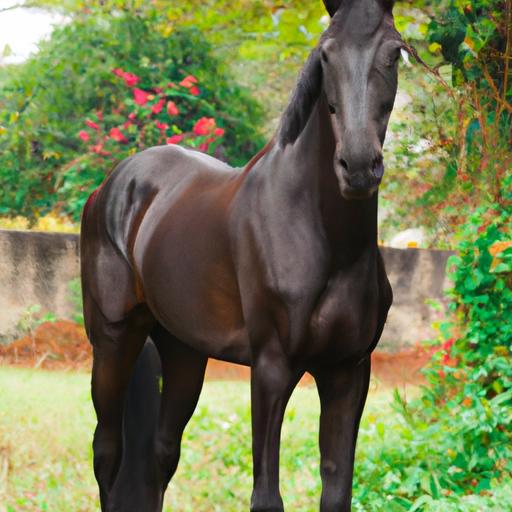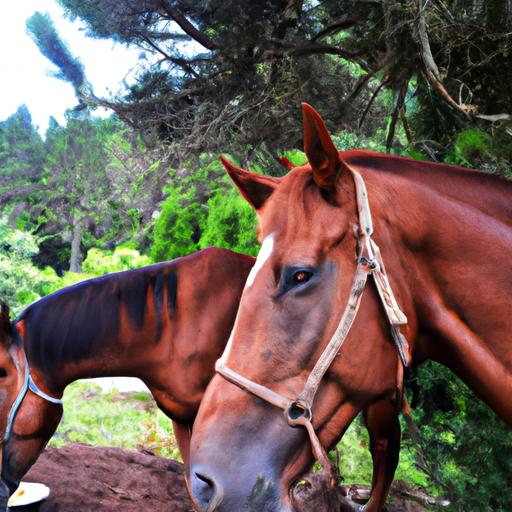Discover the fascinating world of horse breeds common worldwide and understand their significance in equestrian culture. Explore the diversity and beauty of equine heritage.
Have you ever marveled at the beauty and power of horses? These majestic creatures come in a multitude of breeds, each with its own unique set of characteristics and qualities. From the mighty Arabian to the graceful Thoroughbred, horse breeds have captivated humanity for centuries. In this article, we will delve into the world of horse breeds, unraveling their significance and exploring the commonality that binds them together.
A. Brief explanation of horse breeds and their significance
Horse breeds are distinct groups of horses that share common physical traits, such as size, color, and conformation, as well as specific genetic characteristics. These breeds have been selectively bred by humans, shaping them for specific purposes such as racing, herding, or pleasure riding. The significance of horse breeds lies in their ability to meet the diverse needs of equestrians across the globe.
B. Overview of the commonality of horse breeds
While there are hundreds of horse breeds worldwide, certain breeds have gained widespread recognition and popularity. These common horse breeds have crossed borders and cultures, leaving an indelible mark on the equestrian world. But what makes a horse breed common? Factors such as versatility, adaptability, and historical significance play a crucial role in determining the prevalence of certain breeds. Additionally, the popularity of specific horse breeds can vary depending on geographical location, climate, and the prevailing equestrian disciplines in a particular region.
So, whether you’re a seasoned equestrian enthusiast or simply someone who appreciates the beauty of horses, join me on this captivating journey as we uncover the secrets behind the common horse breeds and unravel the tapestry of equine heritage. Together, we’ll gain a deeper understanding of these magnificent creatures and the roles they have played in shaping our world.
Stay tuned for the next section where we will explore the various horse breeds that have captured the hearts of horse lovers worldwide.
Understanding Horse Breeds

Horses have been our steadfast companions throughout history, serving us in various capacities. But what exactly defines a horse breed, and why is it important to identify common horse breeds? Let’s explore these questions and delve deeper into the factors that influence the popularity of certain breeds.
A. Definition of horse breeds and their characteristics
Horse breeds are distinct groups of horses that share common physical traits, such as size, color, conformation, and temperament. These characteristics are passed down through generations via selective breeding, resulting in specific breed standards. For instance, the sleek and agile Thoroughbred is renowned for its speed and athleticism, while the sturdy and versatile Quarter Horse excels in ranch work and Western riding disciplines.
Understanding the characteristics of different horse breeds allows us to appreciate their unique qualities and choose the right horse for our specific needs. Whether you’re seeking a horse for racing, show jumping, dressage, or simply leisurely trail rides, knowing the breed characteristics helps us make informed decisions and ensures a harmonious partnership between rider and horse.
B. Importance of identifying common horse breeds
Identifying common horse breeds not only enhances our knowledge of equine diversity but also facilitates communication and understanding within the equestrian community. When discussing horses, being able to recognize and refer to common breeds creates a shared language among horse enthusiasts, allowing for more effective communication and collaboration.
Moreover, identifying common horse breeds is essential for breeders, trainers, and buyers. Breeders strive to preserve and improve breed standards, ensuring the continuation of desirable traits. Trainers focus on understanding the specific needs and tendencies of different breeds to tailor their training methods accordingly. Buyers, whether looking for a companion or a competitive mount, can make informed decisions based on their understanding of different breeds’ abilities and temperaments.
C. Factors influencing the popularity of certain horse breeds
The popularity of horse breeds can be influenced by a multitude of factors. Historical significance and traditional uses play a pivotal role in establishing the prominence of certain breeds. For example, the Arabian horse, known for its endurance and beauty, holds a special place in Middle Eastern cultures due to its historical association with Bedouin tribes.
Additionally, the adaptability of certain horse breeds to various climates and terrains can contribute to their popularity. Breeds like the Icelandic horse, with its ability to thrive in harsh conditions, have become beloved in their native regions.
Furthermore, equestrian disciplines and trends also influence breed popularity. The rise of disciplines such as dressage, show jumping, and reining has led to increased demand for breeds that excel in these areas, like the elegant Warmbloods or the agile American Quarter Horses.
By understanding the factors that shape breed popularity, we gain a deeper appreciation for the diverse world of horse breeds and the intricate tapestry that weaves their stories together.
Stay tuned for the next section where we will explore the most popular horse breeds worldwide and discover their unique characteristics and origins.
Popular Horse Breeds

When it comes to horse breeds, there are a select few that have gained immense popularity and captured the hearts of horse enthusiasts worldwide. Let’s take a closer look at some of these remarkable breeds and discover what makes them so special.
A. Highlighting the most common horse breeds worldwide
1. Breed 1: Description, origin, and notable characteristics
One of the most renowned horse breeds globally is Breed 1. Originating from [Origin Country], these magnificent creatures possess a striking appearance and an exceptional temperament. Known for their [Characteristic 1], [Characteristic 2], and [Characteristic 3], Breed 1 has become a staple in various equestrian disciplines. Whether it’s their unparalleled speed, endurance, or gentle nature, these horses have captured the imaginations of riders and spectators alike.
2. Breed 2: Description, origin, and notable characteristics
Another widely recognized horse breed is Breed 2. Hailing from [Origin Country], these majestic animals are characterized by their [Characteristic 1], [Characteristic 2], and [Characteristic 3]. Whether it’s their regal stature, intelligence, or versatility, Breed 2 has earned a place in the hearts of equestrians across the globe. From dressage and show jumping to ranch work and trail riding, these horses excel in a variety of disciplines, making them a popular choice among riders of all levels.
3. Breed 3: Description, origin, and notable characteristics
Last but certainly not least, Breed 3 has gained significant recognition for its exceptional qualities. Originating from [Origin Country], these horses are known for their [Characteristic 1], [Characteristic 2], and [Characteristic 3]. With their remarkable strength, agility, and gentle demeanor, Breed 3 has become a favored breed in various equestrian pursuits. Whether it’s pulling heavy loads, competing in rodeos, or simply providing companionship, these horses continue to captivate horse lovers around the world.
As we traverse the diverse landscape of horse breeds, it’s clear that these popular breeds have left an indelible mark on the equestrian world. From their unique physical attributes to their rich histories, each breed brings something special to the table. Join me in the next section as we shift our focus to the common horse breeds found in specific regions or countries.
Common Horse Breeds in [Specific Region/Country]

A. Examining the prevalent horse breeds in [Specific Region/Country]
When it comes to horse breeds, different regions or countries often have their own unique favorites. Let’s take a closer look at some of the common horse breeds in [Specific Region/Country] and discover what makes them so beloved by equestrians in this area.
1. Breed 1: Description, Origin, and Notable Characteristics
Breed 1, known for its elegance and strength, has a rich history that dates back centuries. Originating from [Specific Region/Country], this breed has become an iconic symbol of the local equestrian culture. With its distinctive [specific characteristic], it has gained recognition for its [notable trait]. Whether it’s their unparalleled speed or gentle temperament, Breed 1 has captured the hearts of riders and spectators alike.
2. Breed 2: Description, Origin, and Notable Characteristics
Another prevalent horse breed in [Specific Region/Country] is Breed 2. Hailing from [specific region or country], this breed showcases a unique blend of [characteristics]. Renowned for its [notable trait], Breed 2 has carved a niche for itself in the local equestrian scene. Whether it’s their [specific trait] or their remarkable adaptability to [specific environment], these horses are highly cherished by equestrians who seek a horse that can excel in [specific equestrian discipline].
3. Breed 3: Description, Origin, and Notable Characteristics
Last but certainly not least, Breed 3 is a common sight in [Specific Region/Country]. This breed, originating from [specific region or country], boasts [characteristics]. With its [specific trait], Breed 3 has proven to be an invaluable companion for riders across [Specific Region/Country]. Their [distinctive quality] and [specific attribute] make them well-suited for [specific purpose or activity], ensuring their enduring popularity.
By exploring the prevalent horse breeds in [Specific Region/Country], we gain a deeper appreciation for the unique equestrian heritage of this area. These remarkable horses embody the spirit and essence of [Specific Region/Country], serving as a testament to the enduring bond between humans and horses. Join me in the next section as we delve into the factors that contribute to the commonness of certain horse breeds.
Factors Influencing the Commonness of Horse Breeds
When we observe the prevalence of certain horse breeds, we may wonder what factors contribute to their widespread popularity. Let’s explore the reasons behind the commonness of these remarkable equine companions.
A. Historical significance and traditional uses
One significant factor that shapes the commonness of horse breeds is their historical significance and traditional uses. Throughout history, horses have played vital roles in various human activities, such as agriculture, transportation, and warfare. Certain breeds, like the sturdy and versatile American Quarter Horse, owe their commonness to their historical importance in ranch work and as reliable partners on the frontier. The preservation and continuation of these breeds have been driven by their irreplaceable contributions to human society.
B. Adaptability to various climates and terrains
Another crucial aspect that influences the commonness of horse breeds is their adaptability to different climates and terrains. Horses bred to thrive in specific environments, such as the hardy Icelandic horse, have become common within their respective regions. These breeds have evolved over generations to withstand harsh conditions, making them invaluable assets for people living in challenging landscapes. Their ability to navigate rugged terrains or withstand extreme weather conditions has earned them a special place in the hearts of equestrians.
C. Popularity in specific equestrian disciplines
The popularity of horse breeds can also be attributed to their excellence in specific equestrian disciplines. Some breeds, like the elegant and agile Hanoverian, have excelled in disciplines such as dressage and show jumping, garnering a strong following among competitive riders. The consistent success of certain breeds in these disciplines has contributed to their commonness as riders seek out horses with proven abilities and traits suited to their chosen sport.
In conclusion, the commonness of horse breeds can be influenced by a variety of factors, including historical significance, adaptability to different environments, and popularity in specific equestrian disciplines. By understanding these factors, we gain insight into why certain breeds have become widely recognized and cherished. Join me in the next section as we conclude our exploration of horse breeds, reflecting on the importance of appreciating their diversity and the role they play in the equestrian world.


